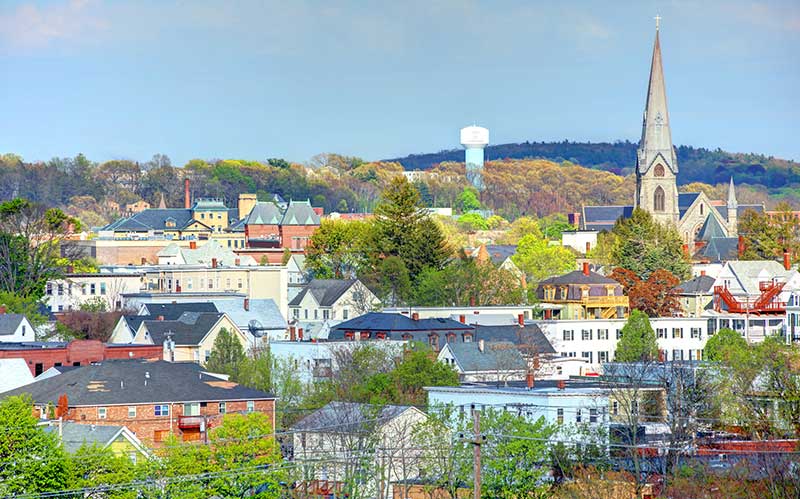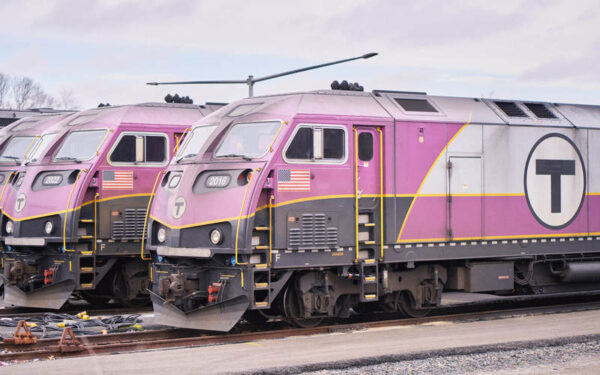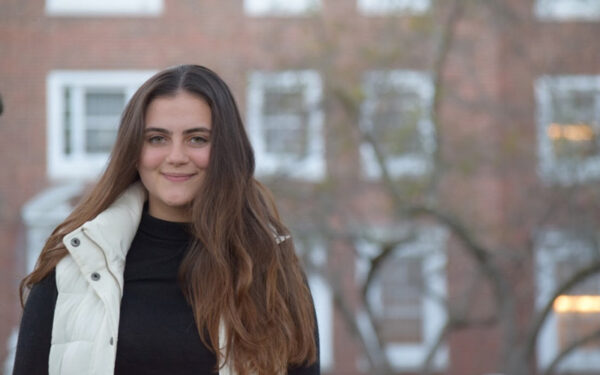
In the historic mill city of Lawrence, Massachusetts, residents are leading the charge to develop a pilot project that will address climate and health inequities. Photo: Dennis Tangney via IStock
With climate impacts already affecting New England – from extended heat waves to heavier and more frequent rains – communities are turning their attention to protecting residents from ever-worsening climate fallout. These impacts will hit some communities harder than others, however. Those living in urban areas with little tree cover, for example, suffer more when heat waves strike. And those who lack a car or easy access to affordable transportation could be left stranded if a flood were to force a local evacuation.
The reality is, the communities that will be hit hardest are usually home to more families of color and low-income families. With support from the Robert Wood Johnson Foundation, CLF and Groundwork Lawrence have launched a 30-month project to address such climate inequities in Lawrence, Massachusetts. The goal: to create “resilient corridors” that will allow residents to safely walk or bike to parks, health food stores, community centers, and schools. These corridors do double duty – building climate resilience for tomorrow while addressing health disparities today. The project is part of an initiative funding six U.S. cities to bring innovative approaches from abroad that mitigate the unequal health risks posed by climate change.
It won’t be CLF and Groundwork Lawrence determining what to prioritize for these corridors, however. It will be Lawrence residents themselves. A four-member resident task force is both conducting research – they recently placed air quality monitors throughout the city – and engaging neighbors to educate them and hear their ideas for how to address climate issues.
I sat down with task force members Martha Leavitt and Jorge Hernandez to hear more about this critical work and what drew them to be a part of it. (Check out our interview with task force members Destiny Gonzalez and Eve Rodriguez, too.)
This interview has been edited for clarity.
What made you want to get involved in this project?
Jorge: The ability to work with other community members and the idea behind trying to move our community forward, particularly around this issue. I don’t know how many residents are paying attention or thinking proactively around climate change issues and how a city like ours is, or might be, more heavily impacted if we don’t start planning and implementing some changes now.
Martha: One of the driving forces through my whole life is that I’ve been involved in volunteering on some level. My kids are old enough now where I can start to get re-engaged in working with the city to support the city, whether it’s on this or any other initiatives. I also really like the aspect of trying to introduce the next generation, the Destiny Gonzalezes of the world and Jorge’s kids and my kids. It’s exciting to get them to understand a little bit more about their community and how their choices may impact them directly or indirectly in the future and how they can be part of defining what those choices are.
What worries you most about how climate change could impact your community?
Martha: For the 30 years that I’ve lived in Lawrence, I’ve always heard about the asthma rates in the city. I know so many kids, so many of my children’s peers, who have suffered from asthma. Lawrence sits on a highway. My understanding, just from anecdotal information, is that the number of cars in the city has almost doubled in the past 10 years, which is troublesome for many reasons.
Jorge: I agree. The health component here is vitally important. I had heard something similar with regards to the number of cars increasing dramatically. We’re not a big city to begin with. We’re already heavily trafficked. And so those are things that we as residents need to pay more attention to.
Why is it so important that the community lead on this work?
Martha: There’s always a fear, in particular in communities like Lawrence, where you’ve got a high population of immigrants. Being told what to do is different than making the decision, making the choice to do something. I think there’s always a fear of any organization led by outsiders, Groundwork included, telling people what’s best for their city. That’s always been an issue in Lawrence. There’s a whole segment of the population that I feel we’re always missing, that we’re not capturing whenever any policy changes are implemented. And I don’t know how to give those people a voice without going directly to them.
Jorge: The ability to draw the community in is vitally important – and it’s the way that we’re going to have the residents take ownership over this initiative.
I think many times, meetings are held, or surveys are sent out, and feedback is provided. But then residents might feel like it’s all falling on deaf ears. So, the thought is, “No one’s going to listen to me, anyway.” It’s a tough hurdle to overcome. We’re going to have to figure out how to help people understand that this is real, that we’re looking for their input, that that is going to help drive what winds up getting done – and that there are some dramatic, positive things that can come out of the work that’s undertaken.
Given those challenges, what are some ways to overcome that distrust or reticence?
Jorge: As an educator, what I want to do in the classroom is draw students in [and] have them take ownership of their learning. Same thing here, right? Just a different forum. We want to be able to draw in the community and then let them know that this isn’t just a group or an organization trying to talk down at them, but rather they’re looking to bring them in and get their ideas. What’s their lived experience? Is there something that maybe hasn’t been thought of that needs to be taken into account as we look to try and implement some of these changes?
Martha: That’s the challenge: direct engagement of residents. Whether that’s through neighborhood meetings, whether it’s through information nights – it’s meeting people where they’re at. I also think the most important thing is the kids who are coming of age now and are just starting to have opportunities to be involved in their community – to grow that sector. You’ve got to cultivate an atmosphere of how important it is to be connected to your community. [These kids] want to be educated. They want to be in the know. They want to be active. They want to represent, and they want to be represented.
How do we make these issues real in terms of people’s daily lives?
Jorge: Ultimately, I think with [CLF’s] assistance, with Groundwork, the task force needs to understand or figure out what’s going to be the hook? For example, if we’re able to show members of the community heat maps that show the direct impact of our city not having enough trees – and the amount of asphalt and industrial buildings that exist and how that contributes to our city being that much warmer than towns two miles, a mile, a half a mile over. I think that’s something tangible that might prompt people to take action.
Martha: Part of my hope is in the data that is collected based on the locations that have been chosen [for air monitoring]. Hard facts speak volumes sometimes. And having that data and being able to be a little bit in your face about it might be what’s needed.
Okay, changing gears now. What are some of your favorite spots in Lawrence?
Jorge: There are a lot of good places for green space. Because it’s a more central and larger area, the Common right by City Hall is a wonderful green space. For restaurants, I can think of a couple: one is Cafe Azteca, and the other is El Taller.
Martha: One of my favorite green spaces would be the reservoir on Tower Hill. I think the view up there is amazing. As far as something to eat, I will say that these days, the Spicket River Brewery is a favorite of mine. And it brings people from Andover, North Andover, Methuen.
Any final words?
Jorge: I know Martha best, but I’ve gotten to know the other two task force members (Destiny and Eve), and everyone’s really dedicated, focused on how can we help residents understand what it is that we’re trying to accomplish as part of this task force. The idea of re-imagining our city, what the city looks like – whether it’s the streets or public spaces, or the creation of green spaces – is a very exciting idea.




